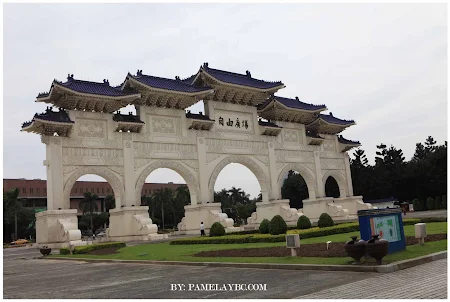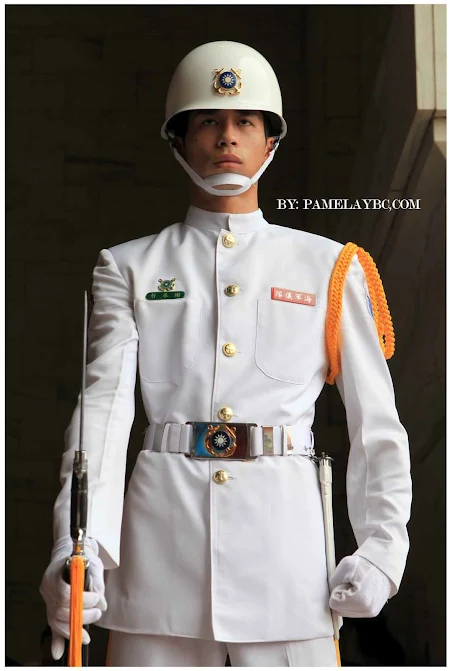Chiang Kai-shek Memorial Hall (國立中正紀念堂) is located in the heart of Taipei City. The area is 250,000 square meters and it is the attraction most visited by foreign tourists. Outside the gate of Chiang Kai-shek Memorial Hall, there are poles carrying the sign of true rightness. The architecture of Chiang Kai-shek Memorial Hall is inspired by Tiantan in Beijing.
Here, you can see the big gate upon your arrival welcoming you to the Memorial Hall.
The area is indeed a large place and it has there is two theater in between the main building itself. It is indeed a long walk to heads to the statue itself and here you may enjoy the breeze and the sight seeing around the area.
There is one theater on the right and another on the left and it is a indeed a big one too. We are now up heading to the building to witness the Chiang Kai-shek Memorial Hall. And now we climb step by steps up to the Memorial Hall which is there are 89 steps all together to represent Chiang’s age at the time of his death, lead to the main entrance.
and here we see the massive Chiang Kai-Shek sitting and looking out at the square.
We are being lucky to be there at the right time as we can experience to watch the changing of the guards ceremony. It is happens every hour and there are 2 guards always stand at the entrance of this space. During the hour, the guard is indeed standing VERY still for the 2 hours without any movement.
The ceiling is indeed very impressive too with the look of the flag of Taiwan above.
After that, we headed to the ground place where you can see some history and learn more about Chiang Kai-Shek and all.
Chiang was an influential member of the Nationalist Party, the Kuomintang (KMT), and was a close ally of Sun Yat-sen. He became the Commandant of the Kuomintang’s Whampoa Military Academy, and took Sun’s place as leader of the KMT when Sun died in 1925. In 1926, Chiang led the Northern Expedition to unify the country, becoming China’s nominal leader.[3] He served as Chairman of the National Military Council of the Nationalist government of the Republic of China (ROC) from 1928 to 1948. Chiang led China in the Second Sino-Japanese War, during which the Nationalist government’s power severely weakened, but his prominence grew. Unlike Sun Yat-sen, Chiang Kai-shek was socially conservative, promoting traditional Chinese culture in the New Life Movement and rejecting western democracy and the nationalist democratic socialism that Sun Yat-sen and some other members of the KMT embraced in favor of a nationalist authoritarian government. (from Wiki)

















